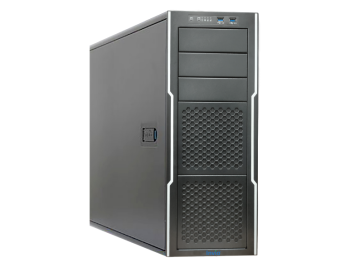Workstations help in running complex and resource-intensive software applications. These can include software for engineering, architecture, graphic design, animation, scientific research, data analysis, and more. These applications often require high processing power, memory, and graphics capabilities, which workstations provide. It enhances productivity by providing a larger desktop space for multitasking and improved visual clarity. Workstations include high-performance processors, larger amounts of RAM, faster storage drives (such as SSDs), and powerful graphics cards. These hardware components enable faster processing, smoother rendering, and efficient data handling. They are subjected to rigorous testing and are built to withstand long hours of continuous operation without compromising performance or causing system failures. Workstations come with more expansion slots and upgrade options compared to standard desktops. This allows users to easily upgrade or add components such as additional RAM, storage drives, graphics cards, or specialized hardware as their computing needs grow. Workstations offer faster processing speeds, larger memory capacities, and advanced graphics capabilities. This leads to improved application responsiveness, reduced processing times, smoother graphics rendering, and enhanced overall system performance. Workstations are often equipped with additional security features, such as advanced encryption options, secure boot capabilities, and hardware-based security modules. This helps protect sensitive data and minimize the risk of unauthorized access or data breaches. Workstations are designed and built to handle demanding workloads and last for extended periods. They often have better heat management systems, improved build quality, and longer product lifecycles compared to standard desktops, resulting in reduced maintenance and replacement costs.

